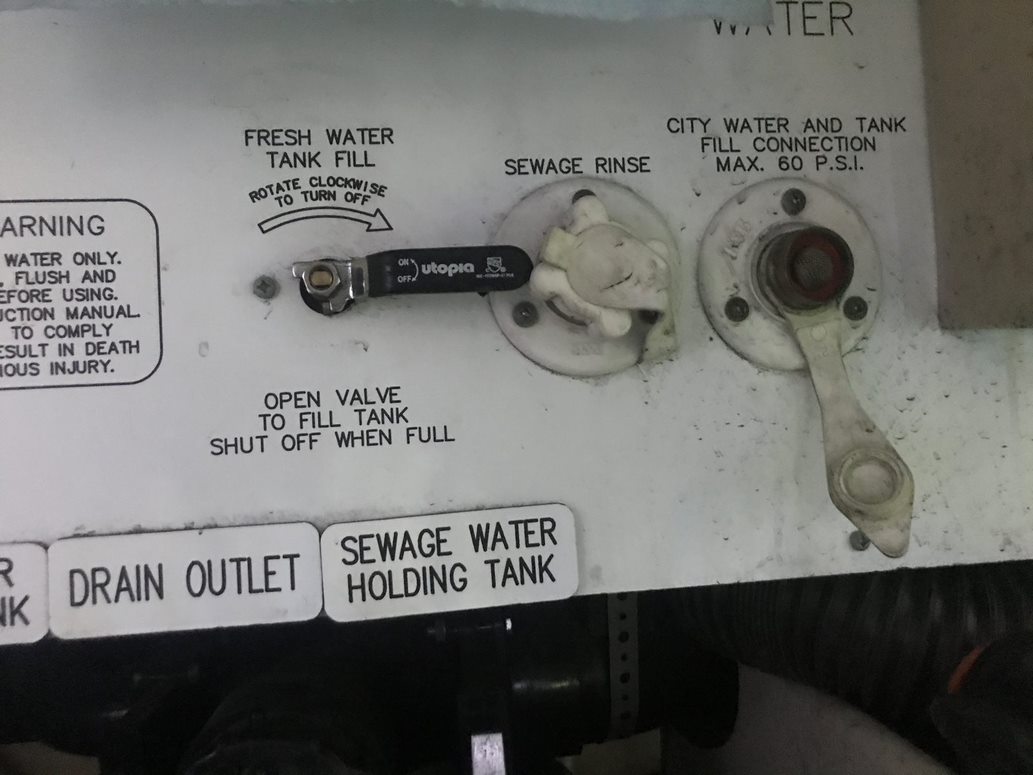
By Steve Froese, F276276
FMCA received a question regarding a reader’s fresh-water plumbing system:
“Sometimes when I am hooked to city water in an RV park, my domestic water tank fills on its own. This comes at any time, although usually during night hours. It overfills the tank, and water runs onto the ground. I need some help solving this problem.”
Good question. Before we get to specifics, this is an appropriate time to offer up a quick primer on the RV fresh-water system. Let’s begin there.
The fresh-water system consists of a fresh-water tank, water pump, water heater, hot and cold waterlines, and the plumbing fixtures (toilet, sinks, showers, etc.). There also may be some valves and extra tubing to facilitate winterization.
To delve into more detail, the water pump, which generally is located close to the water tank, pressurizes the water system to create the flow to the fixtures. To allow for both hot and cold waterlines, a tee is located on the pressure side of the plumbing, just after the water pump. This tee allows half the flow (theoretically) to continue to the cold-water faucets and the toilet, while the other half of the flow enters the water heater, where it is warmed and continues through the hot waterlines. On modern RVs, the waterlines are made using PEX tubing — blue for the cold water and red for the hot.
So, what happens when you are hooked to city water? RVs generally have one of two setups to differentiate fresh-water tank filling from city water hookups. Some RVs have two separate water ports — one, a simple low-pressure gravity fill for the holding tank, and another that directly feeds the fresh-water plumbing. Other RVs incorporate a shared fitting that is used to fill the tank and to connect to the RV’s fresh-water plumbing. On the latter type, the water hose connected to the RV park’s water supply threads onto the shared fitting. A valve (usually in the plumbing bay) then controls the flow of water, directing it either into the fresh tank or into the fresh-water plumbing.
The author did not specify which type of connection the RV has, but there are two primary failure modes that would cause the symptoms described. Since the writer specifically states that “sometimes” the fresh-water tank overflows, it is conceivable the fill valve (if so equipped) is not properly set, or the valve has a leaky O-ring or seal. The city/fill valve is generally a ¼-turn valve, so one direction diverts the water to the fresh tank for filling, while turning the valve in the other direction sends the water directly into the fresh-water line. If the valve is positioned between the two settings, or if the valve has an internal leak, it would result in water going into both the tank and the plumbing.
Unless the author missed the fact that the valve is incorrectly set, the issue may be a faulty (or possibly improperly installed) valve. The other, more common possibility is the check valve on the water pump is faulty.
So, what is a check valve on a water pump? Let’s return for a moment to the plumbing principles of the RV water system. The city water inlet is plumbed into the pressure side of the plumbing, somewhere along the cold waterline, but generally close to the pump and before the water heater tee. When the plumbing system gets pressurized from the city water hose, it flows along the fresh-water plumbing in all directions, including back to the water pump. In order to prevent the water from back-feeding through the pump into the fresh-water tank, a check valve is built into the pump. If this check valve is faulty, the city water backs up through the pump and into the fresh-water tank, causing it to fill — and eventually overflow.
To test the check valve, turn on the city water and turn off the pump. Then, carefully remove the low-pressure fitting from the pump (the one that comes from the water tank). Be sure to hold your thumb over the tank hose or otherwise keep it from pouring water. If water flows out of the pump on the inlet side, the check valve is faulty, and the pump needs to be replaced. I suspect the issue lies with the pump check valve. If not, you might consider taking your RV to your local RV service center for a diagnosis.
